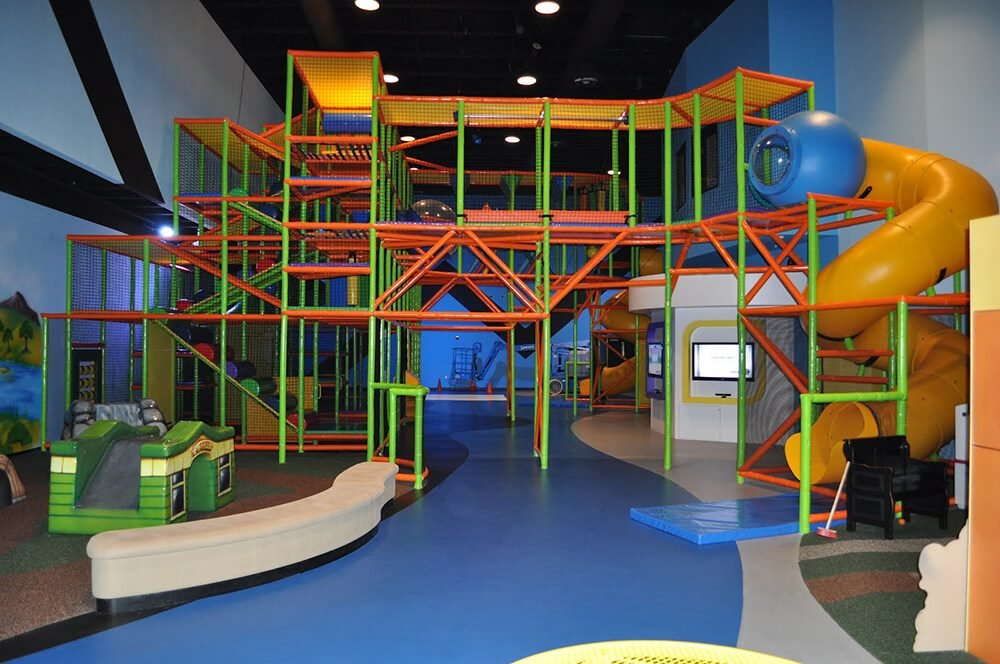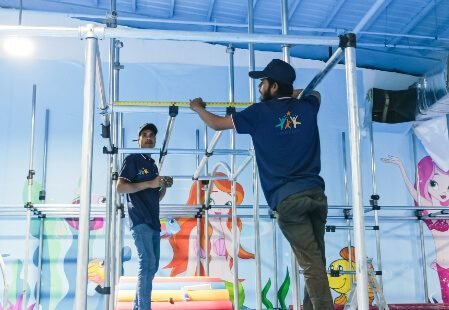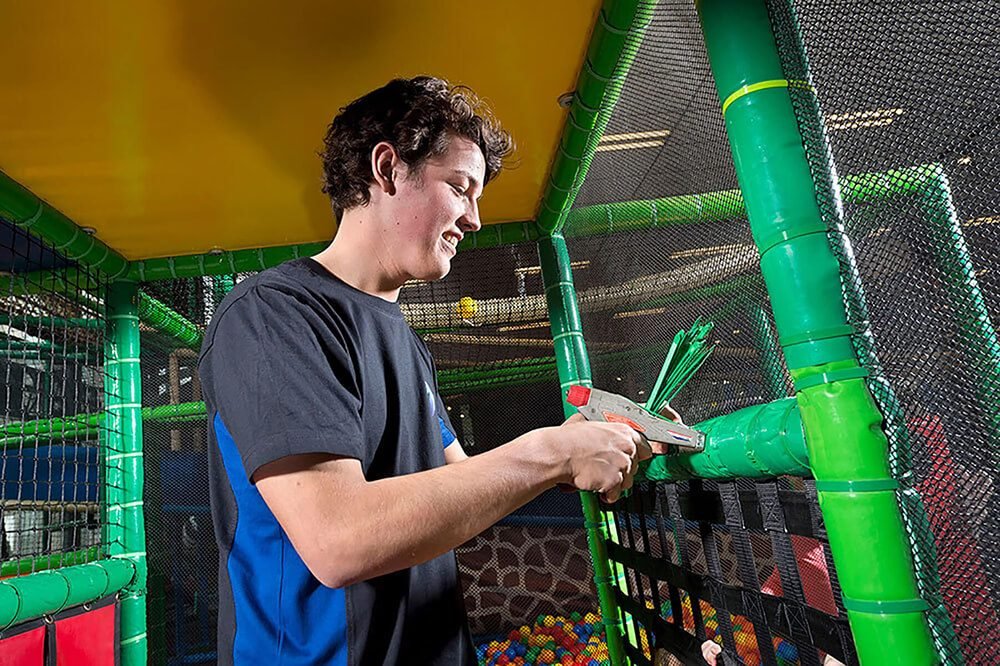In the fast-paced world of indoor playgrounds, safety isn’t just a concern—it’s a priority that can make or break your business. As a venue operator, your ability to provide a safe and enjoyable environment directly impacts your reputation, customer retention, and bottom line. Imagine this: a customer visits your facility and is impressed by the colorful, engaging play structures. Their kids are having fun and everything seems perfect—until an accident occurs due to equipment malfunction or poor supervision. Parents’ confidence in your venue collapses instantly. This situation can be disastrous for your business. At Lebo Play, we understand that offering a fun, safe space for kids is essential to ensuring your venue thrives. That’s why we’ve created this comprehensive guide to help you navigate the key steps for ensuring safety in your indoor playground.
Regularly inspect and maintain equipment, ensure proper installation, use soft, non-toxic materials, keep surfaces clean, provide adequate supervision, adhere to safety standards, and ensure age appropriateness to maximize indoor playground safety.
Let’s dive into how you can ensure indoor playground equipment safety, so your venue becomes a beloved community hub.
Why Indoor Playground Safety is Crucial for Venue Operators?
As a venue operator, the importance of indoor playground safety cannot be overstated. Indoor playgrounds are more than just a source of fun, they play an important role in children’s physical, cognitive, and social development. However, these benefits can only be realized in a safe environment. The moment a child is injuried, the entire family’s experience turns negative, which not only your reputation but also your business. When parents visit an indoor playground, they trust that you have taken all the necessary steps to provide a safe environment. If you fail to meet these expectations, you risk not only losing customers, but also your credibility in the industry.
Safety doesn’t just protect your customers; it protects your bottom line. A safety incident could mean lawsuits, insurance claims, or even the closure of your business. So, safety is not an option, but it’s an investment in your future.
How to Ensure Indoor Playground Equipment Safety?
1. Understanding Safety Standards and Regulations
First and foremost, familiarize yourself with the safety standards and regulations governing indoor playgrounds. This can vary by region, but internationally recognized standards like ASTM (American Society for Testing and Materials) or EN (European Standards) are good benchmarks.
In my experience working with clients, I find that understanding the local building codes and regulations is key. Not only will this protect you from potential liabilities, but it also fosters trust with parents who want assurance that their children are in safe hands. Exploring these legal requirements may seem daunting, but remember, whenever you invest in safety, you’re investing in the longevity of your business.
2. Designing a Safe Indoor Playground Layout
The design of your indoor playground can be a make-or-break factor for safety. One of my earliest projects taught me the importance of considering flow and accessibility in layout design. We once set up a magnificent climbing structure in a space that was a bit too narrow for comfort. It soon became apparent that we needed to redesign to allow for better traffic flow and emergency access.
Segmenting your playground into age-appropriate zones can significantly enhance safety. Smaller, softer play areas for toddlers prevent them from inadvertently wandering into areas designed for older children, which can feature more challenging equipment.
3. Selecting Safe Playground Equipment
Choosing high-quality, durable equipment is crucial, and it begins with partnering with reputable suppliers. When selecting equipment, make sure it’s certified and meets the necessary safety ratings.
Many years ago, I heard from a venue operator who had invested in subpar equipment hoping to save money. Unfortunately, they ended up spending much more on repairs and replacements, not to mention missing revenue when certain areas were closed for fixes. Remember, cutting corners on equipment can compromise safety and ultimately cost more in the long run.

4. Installing Playground Equipment Correctly
Proper installation is crucial. Improperly installed equipment can lead to structural instability and pose safety risks. Always work with professional installers who have experience with playground equipment to ensure that everything is securely in place and meets safety standards.
If you want to install it by yourselves, hope this article can help you: How to Install Indoor Playground?

5. Implementing Ongoing Maintenance and Inspection
Regular maintenance and inspection routines cannot be overstated. Develop a maintenance schedule that fits the intensity of your playground’s usage. Some of my successful clients have set up daily, weekly, and monthly maintenance checklists, which have drastically reduced incidents.
Essential Maintenance Tips:
- Check for wear and tear on equipment (loose bolts, frayed ropes, etc.)
- Regularly clean and disinfect surfaces and equipment
- Ensure all surfacing is intact and meeting safety standards

6. Training Staff and Supervising Playground Use
Your staff plays a critical role in ensuring safety within your indoor playground. They should be trained to handle emergencies, guide children on safe play practices, and supervise high-risk areas closely. Ensure your team understands how to monitor equipment usage and prevent unsafe behavior like rough play or overcrowding.
Effective Supervision Strategies:
- Educate staff on effective crowd management tactics
- Encourage a culture of proactive supervision, where potential hazards are anticipated and mitigated early

7. Emergency Preparedness and Response
An emergency response plan is not just a safety requirement; it’s a lifeline. Ensure all staff know the procedures inside-out and conduct regular drills to keep everyone sharp.
At one venue, quick and calm actions in response to a minor incident reassured all the parents present that their children were in safe hands. Having first-aid kits and trained personnel ready provides immense peace of mind, both to the staff and families.
8. Continual Improvement and Feedback Integration
Lastly, fostering an environment of continuous improvement is a powerful strategy. Create channels for receiving feedback from visitors, and use that input to refine your safety protocols. One of our clients set up a simple feedback station and saw numerous practical suggestions emerge, leading to enhancements that they hadn’t previously considered.
Keeping Up with Trends:
- Stay informed on the latest safety technologies and trends
- Regularly review and adjust safety measures based on new findings
Conclusion
Ensuring the safety of indoor playground equipment involves a combination of meeting regulatory standards, strategic design, careful selection of equipment, proper installation, ongoing maintenance, effective staff training, and preparedness for emergencies. By attending to each of these areas, you can create a safe and inviting space that children and parents will cherish.
If you’re ready to invest in high-quality, safety-certified indoor playground equipment that meets the highest standards, contact us today. We’ll help you create a custom playground solution that not only delights kids but also keeps them safe.

